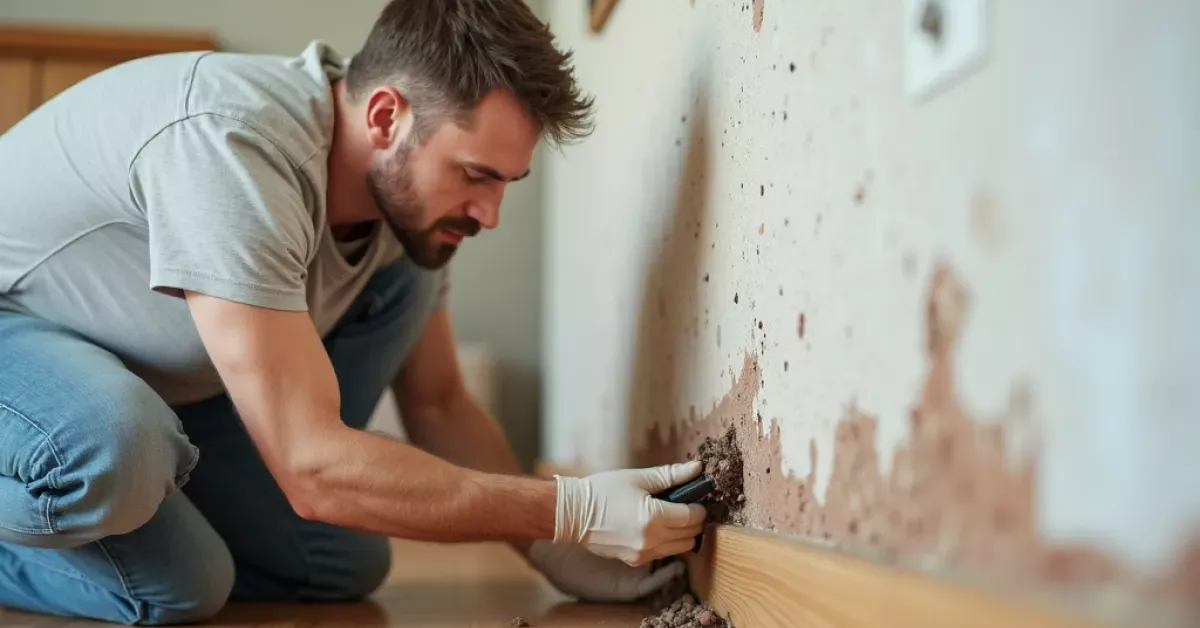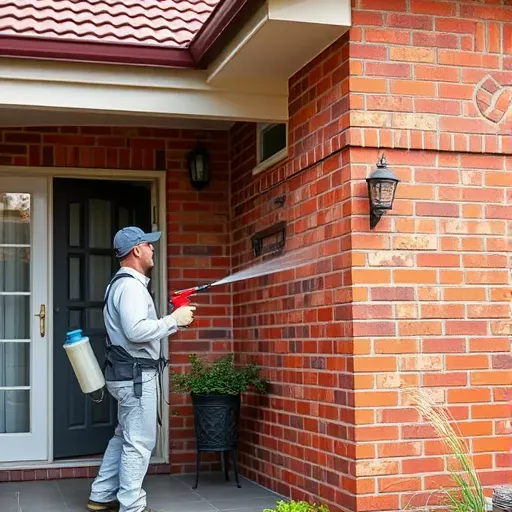Ever found yourself battling an army of ants in your kitchen or heard the unsettling scuttle of mice in the walls? You’ve probably realized how crucial good pest control is to maintaining a comfy, safe home. By understanding the pest control process—from inspection to prevention—you can keep your Aussie home spick and span. This journey not only tackles the nuisances as they come but paves the way for a long, pest-free future.

The Importance of Comprehensive Pest Inspection
Identifying Infestation Types and Extent
Before you can declare war on pests, you need to know precisely what you’re fighting. A comprehensive pest inspection is key to uncovering what type of pests are lurking and just how far they’ve spread. Imagine it as getting a map of enemy territory. You’ll be able to identify clues left behind by pests—like droppings, nests, or undesirable odours—giving you the lowdown on your unwanted guests. This step ensures you don’t go in blind, sprucing up the accuracy and effectiveness of future pest treatments.
First Step in the Pest Control Process
Kicking off the pest control process with a proper inspection saves you from guesswork and quick fixes. Professionals will typically scour your home, evaluating vulnerable spots like cracks and crevices where pests might sneakily squeeze in. This phase lays the groundwork for any pest control plan, securing the intel you’ll need to tackle the problem head on. Whether you’re dealing with creepy crawlers or the more elusive rodents, a comprehensive inspection sets the stage for success!
Exploring Different Pest Treatment Methods
Varying by Pest Type
Not all pests can be dealt with using the same old tactics. Do you have cockroaches, termites, or spiders? Each requires its unique method of elimination. Like picking the right tool for a job, you need focused pest treatment solutions tailored to what’s doing the damage. Specific formulations and methods are essential as what works wonders on ants might not faze mice.
Tailored Treatments for Severity
Some infestations might be resolved quickly with a single treatment, while others demand a stepped-up approach with repeated sessions. Severe infestations need more than a light touch—sometimes involving a combination of products and techniques. The severity of oversight not only impacts the approach taken but influences the timeline and commitment required to fully root out pesky invaders.
Methods of Pest Control Explained
Pest control methods range from chemical treatments and baiting, to traps and natural deterrents. Chemical treatments, often used for termites and ants, kill pests effectively but aren’t always the best for indoor settings—especially homes with kids and pets. Baiting can lure pests away, providing a targeted strategy without the broad-spectrum risks. Moreover, physical traps work magic for bigger critters like rats and mice. You’ll also find non-toxic options gaining popularity, harnessing natural oils and herbs that repel insects without chemicals.

Explore tailored pest treatments designed for specific infestations.
Crafting a Well-Structured Pest Control Timeline
Ensuring Timely Management
Ever noted how pests seem to pick the worst times to appear? A solid pest control timeline aids swift management, avoiding disruptions during inopportune times. Prompt action is critical, as delaying treatments can lead to escalating infestations that become trickier to handle.
Implementing Effective Solutions
Crafting a timeline aligns treatments with periods of pest activity, enhancing the effectiveness of each stage. If you’re tackling termites, for instance, scheduling around their most active times heightens the chances of success. Anticipating and planning these interventions prevents pests from gaining the upper hand.
Milestones and Monitoring
Establishing milestones—like the completion of an inspection, a first round of treatment, and follow-up checks—keeps your pest management plan on track. Regular monitoring post-treatment ensures the initial success doesn’t fizzle out, effectively providing a measure of assurance against re-infestation.
Long-Term Pest Management Solutions
Integrated Pest Management Strategies
Long-standing pest control considers more than the here and now. Integrated Pest Management (IPM) merges various control techniques to tackle pests sustainably. This eco-conscious approach prioritises preventive measures, habitat manipulation, and other supportive methods that go easy on the environment.
Combining Multiple Techniques
By merging mechanical, biological, cultural, and chemical methods, IPM employs a balanced and informed defence against pests. This layered strategy trims back dependency on chemical solutions, encouraging a broader, environmentally conscious stance on pest control.
Comprehensive Control Plans
A robust pest control plan balances immediate pest eradication needs with long-term prevention strategies. Leveraging persistent monitoring, paired with sound exclusion tactics like sealing entry points keeps your home fortified against future invasions. Waging war on pests is a marathon, not a sprint!
Eco-Friendly Pest Control Techniques
Minimizing Environmental Harm
Concerned about the environmental impact of pest control? Eco-friendly methods offer an excellent alternative, reducing the ecological footprint without compromising effectiveness. These methods focus on minimal chemical usage, using sustainable and biodegradable products wherever possible.
Safe for Humans and Pets
Whether you’ve got kids scampering around or pets pattering about, using pet-safe pest control measures is a must. Natural remedies like diatomaceous earth or essential oils provide nontoxic pest control solutions that won’t harm your loved ones but decisively unattract and dismantle pests.
Effective Population Control
Eco-friendly strategies include introducing beneficial insects that prey on pests, employing traps made from ‘do-it-yourself’ ingredients that are both safe and effective, or planting pest-repelling plants along your garden’s periphery. These efforts manage pest populations while preserving the ecosystem, balancing nature’s scales.
Green Alternatives
Eco options don’t just stop pests; they ensure a safer environment for you and future generations. Green pest control pushes for reduced reliance on harsh chemicals, promoting holistic approaches that intertwine smart pest practices with sustainable outcomes.

A vibrant garden employing natural pest control methods for a sustainable ecosystem.
Essential Pest Control Strategies for Homes
Common Residential Pests
Chances are most Aussie homes will face unwelcome visits from the likes of cockroaches, ants, spiders, termites, or rodents at some point. Recognising and understanding these common culprits is vital, forming the core of your home pest control strategy.
Tailoring Solutions for Homes
Each pest presents unique challenges. Ants trailing sugary feasts require careful baits, while the termite threat demands professional-grade interventions like barriers or soil treatments. Cockroaches, notorious for their resilience, often need a mix of baits, traps, and sprays.
Effective Home-Based Techniques
Deploying techniques such as regular cleaning, sealing food and rubbish, fixing leaks, and blocking entry points can act as frontline defences against pests. Simple actions like storing flour in airtight containers and maintaining a clutter-free environment go a long way in deterring pest intrusions.
Prevention and Protection
Emphasising prevention is crucial. Efforts to plug gaps, fix creaky door seals, and properly storing foodstuffs, contribute to maintaining a sound defensive barrier. Vigilance is your best partner in keeping pests at bay, so never underestimate the power of regular inspection and timely intervention!
Role of Pest Control Consultation
Customized Pest Control Plans
Professional consultation takes the guesswork out of pest management. Specialists design tailor-made pest control plans that factor in the unique layout of your home, the type and severity of the infestation, and your preferences towards chemical or eco-friendly solutions.
Addressing Specific Needs
No two homes are identical, nor are the pest challenges they face. Consultation pinpoints specific needs, setting a defined path for monitoring progress, while ensuring pest dilemmas are resolved effectively over the long-term.
Developing Strategic Approaches
Pest control experts stay abreast of innovative approaches that might skip your radar. Their strategic know-how focuses on promptly addressing pest issues while forecasting potential future problems. Whether it’s traditional methods, new tech, or hybrid systems, these pros cover every angle to perfect your pest control strategy.
Handy Tips for Pest Control
- Keep it clean: Tidy up areas that might attract pests, like the kitchen and garden.
- Seal gaps: Closing off entry points is a simple yet effective way to prevent infestations.
- Monitor regularly: Stay alert for signs of pests and take action before things escalate.
- Eco-friendly options: Consider non-toxic treatments to safeguard your family and pets.
- Consult the pros: Seek experts when dealing with overwhelming infestations or if unsure where to start.
Common Pest Control Mistakes
- Ignoring early signs: Delays in action often make things worse.
- Relying only on DIY treatments: Sometimes professional insight is invaluable.
- Overusing chemicals: This can harm more than just pests, consider alternatives.
- Skipping inspections: Underestimations can derail effective pest control.
- Cutting corners: Comprehensive understanding and actions lead to long-lasting results.
Whether you’re planning to DIY it or considering calling in the professionals, arming yourself with the knowledge of pest control helps you take informed steps towards creating a pest-free haven. Understanding your home’s specific needs and challenging pests—while utilising modern strategies and eco-friendly solutions—ensures your comfort, health, and peace of mind. Plus, keeping an eye on the latest pest management innovations guarantees you’re always a step ahead of any unwelcome visitors!
